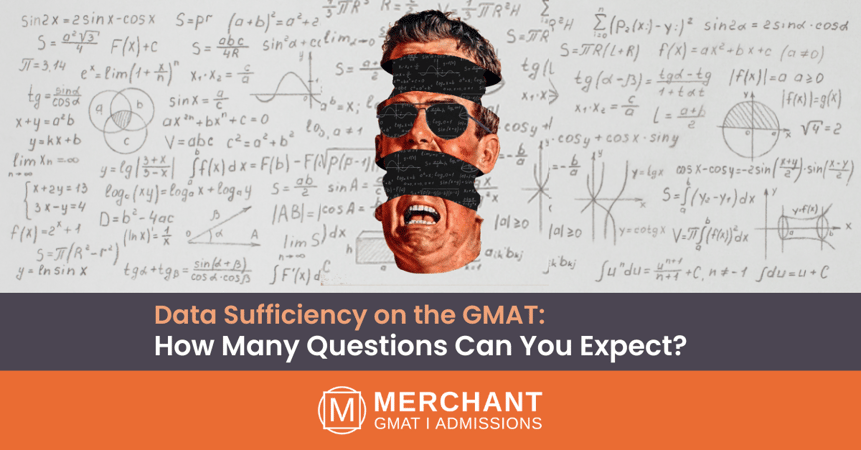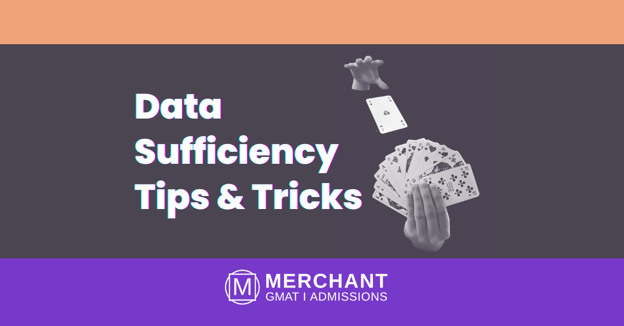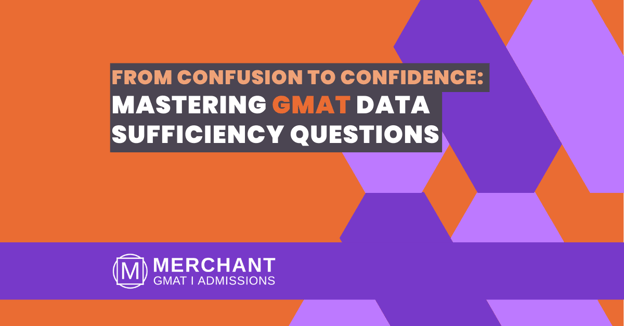Data Sufficiency on the GMAT: How Many Questions Can You Expect?

If you're preparing for the GMAT, one of the most important things to focus on is Data Sufficiency (DS). This section tests your ability to reason through complex problems and make sound decisions based on limited information. Here's what you need to know about DS on the GMAT, including how many questions you can expect.
The GMAT Quant section is equally divided between Problem Solving and Data Sufficiency questions
The GMAT Quant section has earned a reputation for being a challenging and rigorous assessment of math skills needed in many professions. To ensure the section is fair and accessible to all test takers, it is equally divided between Problem Solving (PS) questions and DS questions. This division has been appreciated by many due to the fact that GMAT DS is an effective tool for “equalizing” the playing field, making the Quant section more about reasoning rather than memory recall. The tool measures three distinct areas, allowing test takers to apply their problem-solving skills in addition to demonstrating knowledge of core concepts related to math and data interpretation. These three aspects are: whether data given is sufficient, necessary, or both. With its even split between PS and DS questions, the GMAT Quant can objectively assess each test taker's ability.
You can expect to see approximately 12-14 Data Sufficiency questions on the GMAT
The GMAT is a test that requires impeccable reasoning skills, so it's no wonder that DS questions are so prominent. Out of the 31 Quant questions you're likely to get on the test, expect to see approximately 12-14 of those being DS problems. It may take some practice to become adept at answering these types of questions correctly. Of course, with plenty of prep and a firm understanding of this particular type of question format, you can sharpen your skills and increase your chances of success when tackling these especially tricky GMAT questions.
Here are some tips for tackling Data Sufficiency questions on the GMAT:
Tackling DS questions on the GMAT doesn't have to be a daunting task. The DS section can even out the playing field by allowing test-takers of varying math proficiency levels to prove their skills. This tool for assessing three issues - whether information given is sufficient, what other data might be necessary and how to interpret data - is key in working through GMAT questions. To get comfortable in this section, practice recognizing which facts are important and then focus on drawing logical conclusions from that information. Think critically in order to set yourself up for success!
- Understand what the question is asking
When it comes to taking the Quant section of the GMAT, DS is an invaluable tool for creating a level playing field. It is a useful assessment mechanism that not only teaches test takers how to interpret data, but also enables them to understand exactly what part of a question to focus on - helping them answer questions correctly and effectively. This approach encourages test takers to be precise in their thought processes and become familiar with the type of questions presented on the exam. With DS, tackling Quant questions becomes a bit less intimidating as students gain greater insight into what is being asked.
- Use process of elimination
The GMAT DS Tool is a powerful approach that is tailored to make the Quantitative Section of the GMAT Exam more equitable. It allows test-takers to assess three crucial points that pertain to the process of elimination and limit their selection options accordingly. This process helps focus on one correct choice, as a result of analyzing whether the given data set has enough information for an accurate response or not and eliminating wrong answers. GMAT DS encourages stronger skills in conducting targeted, systematic analysis, which can effectively assist any student in searching for the correct answer in an affordable and efficient manner.
- Plug in Numbers
For students aiming to tackle the Quant section of the GMAT test, “plugging in numbers” is an indispensable tool. By plugging in numbers, you can quickly evaluate multiple solutions to a given DS question. The nature of numerical DS questions means that a single answer may be difficult to identify from the given information without testing it out - this is where “plugging in numbers” comes in handy. Whatever solutions you come up with for a particular question can be tested out by substituting a reasonable value into the problem. Doing so can help clarify any uncertainties and quickly narrow down to a single answer choice – saving precious time on test day! As such, “plugging in numbers” is an essential skill for anyone attempting the Quant section of the GMAT or similar tests.
In conclusion, GMAT DS questions are an integral part of the Quantitative section and crucial in helping you reach your desired score. The best way to tackle these tricky questions is to understand what they are asking and use a process of elimination to realize which answer choices are right and which ones must be eliminated. Additionally, plugging in numbers is another great strategy for solving DS questions. To really ace the DS part of the Quantitative section, consider working with a professional GMAT tutor. At Merchant GMAT & Admissions, our tutors draw from their deep experience preparing students for the GMAT in order to provide individualized instruction tailored to you and your needs. Whether you need just a few sessions or comprehensive instruction over several weeks, we can build a plan that fits your learning style. So if you want to get ahead on your MBA journey, contact us today and see how we can help maximize your score potential.
Ready to Start?
Fill out the form, and a member of the Merchant Sales Team will be in contact with you shortly to discuss your MBA journey





